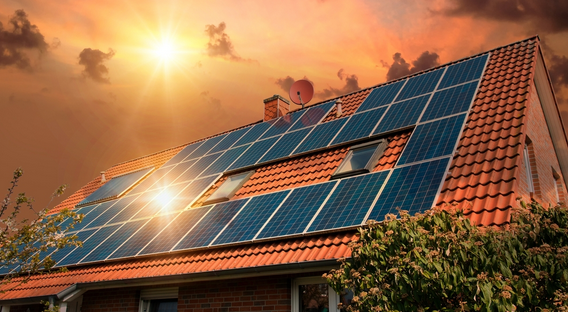Solar lights have transformed the way we illuminate our homes, gardens, and public spaces. As energy costs rise and environmental concerns grow, solar lighting systems offer an eco-friendly, cost-effective solution that utilizes the sun’s energy. In this comprehensive guide, we will explore the benefits of solar lights, how they work, the different types available, and why they are an ideal choice for homeowners and businesses alike.
What Are Solar Lights and How Do They Work?
At their core, solar lights are lighting systems that use solar panels to convert sunlight into electricity, which is then stored in rechargeable batteries. When the sun goes down, the stored energy powers LED lights, providing illumination without the need for an external power source.
The basic components of a solar light include:
- Solar Panels: These are made from photovoltaic cells that absorb sunlight and convert it into direct current (DC) electricity.
- Rechargeable Battery: This stores the energy generated during the day for use at night.
- Controller: This manages the amount of electricity sent to the battery and the LED light to prevent overcharging and excessive discharge.
- LED Light Bulbs: These energy-efficient bulbs provide bright, long-lasting light with minimal power consumption.
By utilizing renewable solar energy, solar lights are an excellent choice for individuals looking to reduce their carbon footprint and minimize electricity costs.
Benefits of Solar Lights
There are numerous reasons why solar lights have gained popularity worldwide. Below are some of the key advantages:
1. Cost-Efficiency
Once installed, solar lights operate using free, renewable energy from the sun. While the initial cost of purchasing and installing the system may seem high, you will save significantly over time on electricity bills. Solar lights require little to no maintenance, making them a one-time investment with long-term benefits.
2. Environmentally Friendly
Solar lights produce zero emissions, making them a greener alternative to traditional lighting powered by fossil fuels. By switching to solar-powered lighting, you help reduce your carbon footprint and contribute to a cleaner environment.
3. Easy Installation
Solar lighting systems are simple to install and typically do not require any complicated wiring. Many solar lights are designed as plug-and-play devices, making them ideal for DIY projects. This also means they can be easily repositioned, providing greater flexibility compared to traditional wired lighting.
4. Low Maintenance
One of the significant advantages of solar lighting is the low maintenance required. Since these systems are self-contained, there is no need to worry about wiring issues or changing light bulbs frequently. As long as the solar panels are cleaned periodically to ensure maximum sunlight absorption, solar lights can last for years without much intervention.
5. Energy Independence
With solar lights, you become less reliant on the grid and conventional energy sources. This is particularly useful in areas with frequent power outages or in off-grid locations. The energy independence provided by solar lights ensures that your home or property remains well-lit, even during emergencies.
6. Versatility
Solar lights come in various styles, designs, and sizes, making them suitable for a wide range of applications. Whether you need them for outdoor pathways, gardens, street lighting, or security purposes, there is a solar lighting option available to meet your needs.
Types of Solar Lights
1. Solar Path Lights
These lights are typically small and are placed along walkways or driveways to provide low-level ambient lighting. They are perfect for guiding paths at night and improving the overall aesthetics of your outdoor space.
2. Solar Garden Lights

Designed to enhance the beauty of your garden or landscape, solar garden lights come in various decorative designs. These lights can be placed around plants, flower beds, and trees to provide a soft glow, creating a relaxing ambiance.
3. Solar Floodlights
For areas that require bright and powerful illumination, such as parking lots or large outdoor spaces, solar floodlights are the best option. They offer high-intensity lighting and are ideal for security purposes or task lighting.
4. Solar String Lights
Popular for decorating outdoor spaces during parties or holidays, solar string lights provide a warm, festive atmosphere. These lights are commonly used to adorn patios, decks, or pergolas, offering an energy-efficient way to light up any outdoor event.
5. Solar Motion Sensor Lights
Designed for security, these lights automatically activate when they detect movement. Solar motion sensor lights are commonly installed near entrances, garages, and driveways to improve safety and deter intruders.
6. Solar Street Lights
These large, powerful lights are used to illuminate streets, highways, and public areas. Solar street lights are increasingly being adopted by municipalities worldwide as they reduce energy consumption and provide a reliable source of light in areas with limited access to the electrical grid.
Factors to Consider When Choosing Solar Lights
1. Location
The effectiveness of solar lights is directly tied to their exposure to sunlight. Ensure that the location where you plan to install the lights receives adequate sunlight throughout the day. Shaded areas or areas with obstructed sunlight may result in reduced charging and limited performance at night.
2. Battery Capacity
The capacity of the rechargeable battery determines how long the lights will stay on after the sun sets. For areas that require prolonged nighttime illumination, choose lights with larger battery capacities to ensure they remain operational throughout the night.
3. Brightness
The brightness of solar lights is measured in lumens. Depending on the intended use, you may need brighter lights for certain areas (e.g., floodlights or security lights) and softer lighting for aesthetic purposes (e.g., garden or string lights).
4. Durability and Weather Resistance
Since solar lights are primarily installed outdoors, it is important to choose weather-resistant models that can withstand harsh environmental conditions such as rain, snow, and extreme temperatures. Look for lights with IP ratings to ensure they are designed for outdoor use.
5. Solar Panel Efficiency
High-quality solar panels with higher efficiency ratings will convert more sunlight into electricity, leading to faster charging times and longer run times for the lights. Panels made from monocrystalline silicon are generally more efficient than polycrystalline silicon options.
Maintenance Tips for Solar Lights
While solar lights are low-maintenance, there are a few steps you can take to ensure they continue to perform at their best:
- Clean the solar panels regularly: Dirt, dust, and debris can accumulate on the surface of the panels, reducing their ability to absorb sunlight.
- Replace batteries as needed: Over time, rechargeable batteries may lose their ability to hold a charge. Replacing them every few years can extend the life of your solar lights.
- Inspect for damage: Check the lights periodically for cracks, rust, or any signs of wear and tear. Addressing these issues promptly will help prevent further damage and prolong the lifespan of your solar lighting system.
Conclusion: The Future of Solar Lighting
Solar lights are more than just a trend—they are a practical, sustainable solution to meet our lighting needs in an energy-conscious world. With advancements in solar technology, the efficiency, affordability, and durability of solar lights continue to improve, making them an increasingly popular choice for both residential and commercial applications.
By investing in solar lights, not only do you save on energy costs, but you also contribute to a greener future. As the world moves toward more sustainable energy sources, solar lighting will undoubtedly play a key role in transforming how we light up our spaces.

